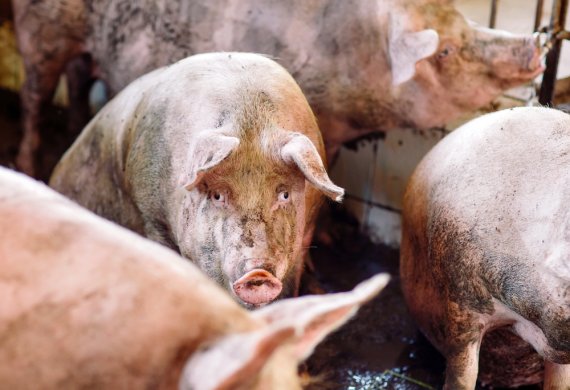© Shutterstock
Dutch law on animal welfare states that the barn environment should not harmful to the animals. This abstract ‘open norm’ creates ambiguity, says Herman Vermeer, researcher in Animal Welfare at Wageningen Livestock Research. ‘Pig farmers can decide for themselves how they achieve this norm but they don’t know exactly what criteria they need to satisfy. The regulatory authorities don’t know what they should be checking either.’
Vermeer and his colleagues have identified five aspects that help determine whether the barn environment is damaging to the pigs. For instance, the concentrations of carbon dioxide and ammonia in the air are measured; they can cause lung problems. Checks are also made to see how red the pigs’ eyes are and how often they bite each other’s ears and tails. Finally, the inspection includes an assessment of how soiled the animals and their stalls are. ‘If it is too warm for the pigs, they try to cool down. If there is no mud available, they lie down in their own manure and urine.’
These aspects are just a selection from a long list of animal welfare indicators. Vermeer: ‘This lets us offer the NVWA a guide for flagging up problem farms. Further investigations will then show whether the statutory norm has been violated. Because that is still the same.’ Vermeer also thinks it will help livestock farmers. ‘Sometimes the pig farmer doesn’t realize that the barn environment isn’t healthy. These aspects are easy to measure and then you can compare them to data on other farms. That will encourage pig farmers to make changes.’ What is more, a good barn environment is not just important for the health and welfare of the animals but also for the health of everyone working in the barn.
One limitation of the research, says Vermeer, is that the farm inspections for the study mainly took place at low temperatures. ‘There is less ventilation on colder days, which means the air quality in the barn is worse on average in the winter. Different problems, such as heat stress, play more of a role in the summer. It would be good to test whether the indicators we found are season-dependent.’
The NVWA started using these aspects to inspect farms this month. ‘I’m curious to see how it works out. The inspectors are new to it too. It will be a while before they can see whether it’s working. Perhaps similar aspects could be compiled for other farm animals, which are still subject to an open norm at the moment.’
Also read:
Two-storey pig shed
‘Video recordings of slaughter definitely help’
Piglets from group pen grow better

